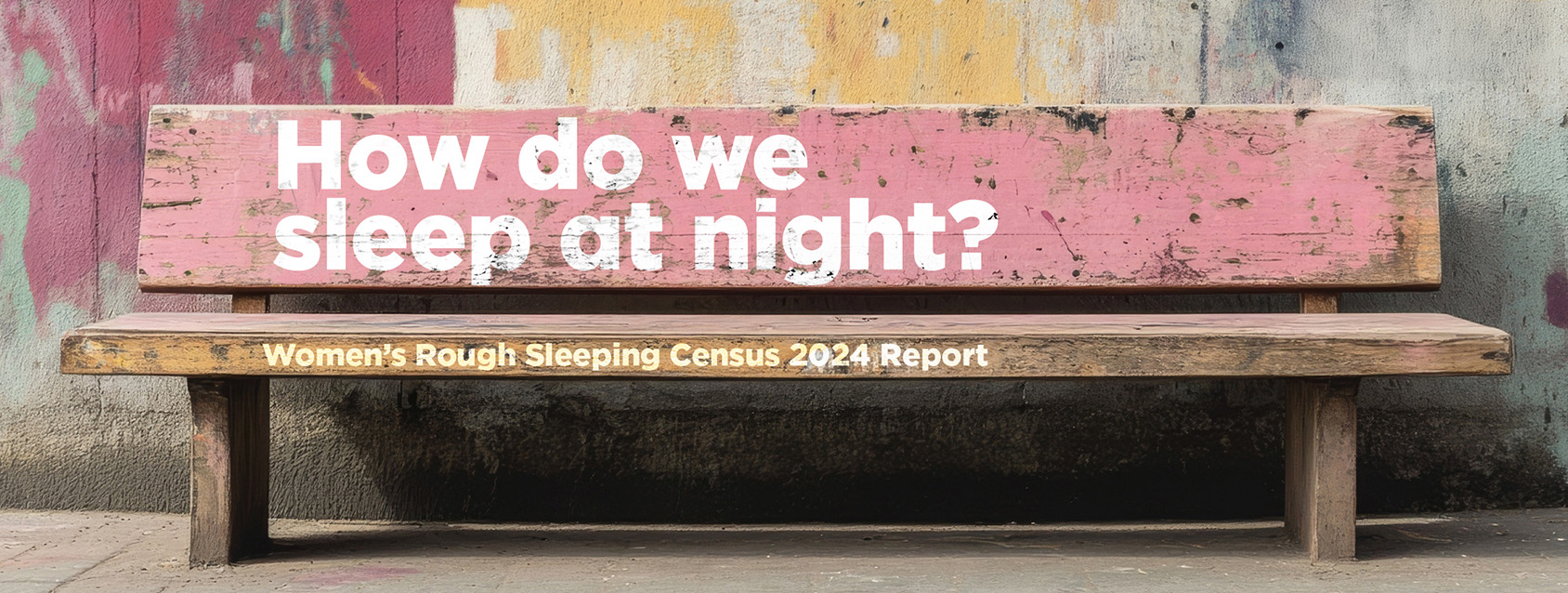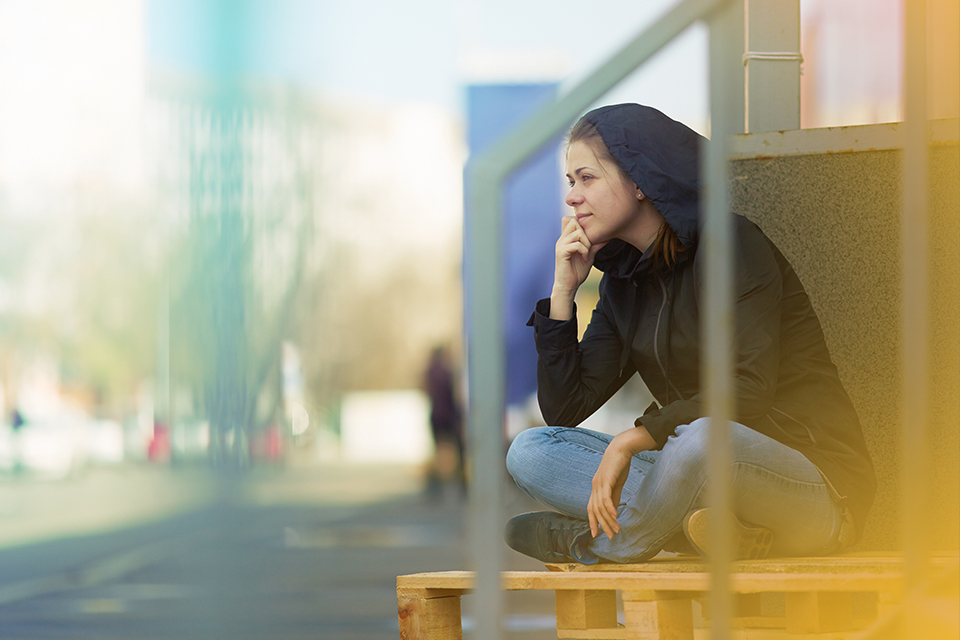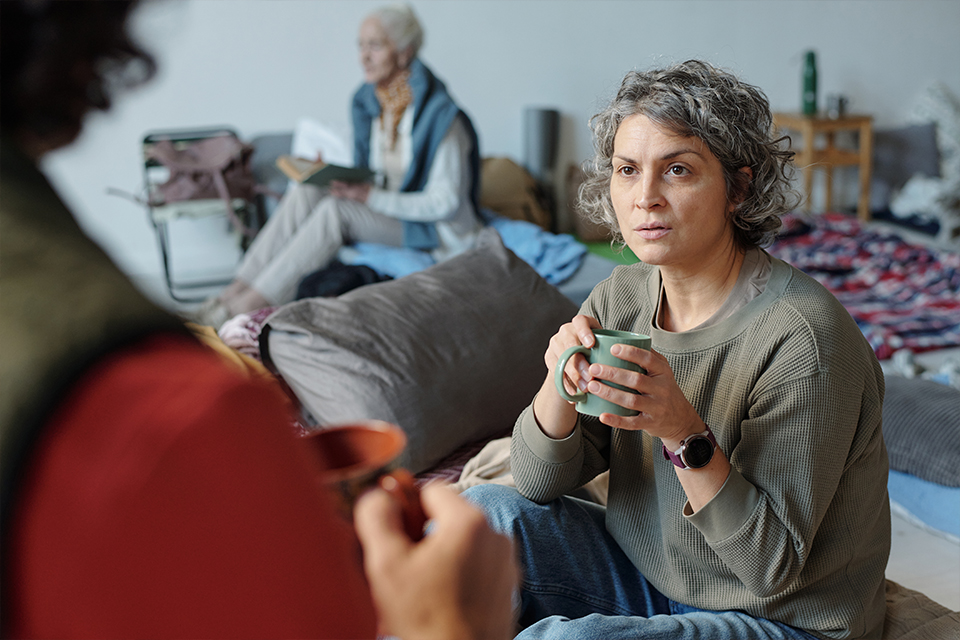26 June 2025
More than ten times as many women are sleeping rough than are identified through Ministry of Housing, Communities and Local Government ‘snapshot’ counts, according to new research. Charities say faulty figures are due to gender-biased collection methods and are calling for changes to Government policy and practice

Change Grow Live, along with charities Solace, Single Homeless Project and Crisis, have published their third annual Women’s Rough Sleeping Census report, How Do We Sleep at Night? Conducted across 88 local authorities, it uses more thorough and accurate research methods, that better reflect the true scale and realities of how women experience rough sleeping across England. This includes the near-universal experiences of domestic abuse and violence against women and girls (VAWG).
“I feel vulnerable. You have to rely on people who you can't trust and don't feel safe with. I don't have the money to go into restaurants for shelter and have to put myself at risk […] so I can get shelter for the night.” – census survey respondent

The findings demonstrate that women’s homelessness is compounded by systemic neglect, with policies, funding, data collection methods and services failing to adequately recognise and respond to women’s experiences – because they are designed for men.
Key findings
The Government is not looking in the right places. Many locations where women spend the night are not classified as ‘rough sleeping’ in the Government’s snapshot, such as A&E departments, libraries and public transport. This means the official data collection excludes women sleeping rough in these types of spaces.
Accommodation services aren’t designed for women’s needs. Over a third of respondents reported having been in some form of homelessness accommodation before sleeping rough. This shows that current services often fail to meet women’s needs.
Homelessness services aren’t set up to reach women. 77% weren’t getting support from a housing officer or council housing team, 43% weren’t in touch with a homelessness service, and a third weren’t accessing either.
Five asks of Government
The report recommends that the Government develops a specific chapter on women's homelessness, as part of their cross-government homelessness strategy, that addresses five points
Recognise women’s homelessness: Adopt a gender-informed definition of rough sleeping that reflects women's hidden, transient and intermittent experiences.
Improve the data: Give councils the tools, resources, and guidance they need to collect accurate, inclusive data on women sleeping rough.
Fund safe services: Ensure homelessness services are accessible, safe, and equitable for women - backed by the funding to make this possible.
Join the dots: Develop joined-up strategies across departments, including the upcoming VAWG Strategy, so women can get housing and support wherever they turn.
Act earlier: Invest in prevention and early intervention so women can avoid homelessness or get help the moment they need it.

The view from Change Grow Live
“It’s so encouraging that more and more local authorities are contributing to this census each year,” said Sam Wright, who wrote the report for Change Grow Live.
“Our findings bring home how many women are victimised whilst sleeping rough and that homelessness services are not sufficiently resourced to respond effectively to their needs. It’s concerning that the women responding to the census were more likely to have accessed drug and alcohol services than other health services, given that we know how many have serious health problems. So much needs to be done to improve our support for women. I think this year we have a real opportunity to bring about genuine change.”
Lesley Howard, Head of Homelessness at Change Grow Live, added: “We have our clearest picture yet of the unique challenges women face when experiencing homelessness. This is a powerful opportunity to reshape our systems for the better.
"We need greater investment in homelessness prevention, including access to drug and alcohol services, to ensure women at risk of or experiencing homelessness can get the help they need as early as possible. It is clear we must listen to their experiences to build support services that truly work for women.”
The 2024 Women’s Rough Sleeping Census was led by Solace Women’s Aid and Single Homeless Project, with support from London Councils and the Greater London Authority to deliver the London Census. The census 2024 report was authored by Change Grow Live and Crisis. The census has taken place in 88 local authorities across the country, led locally by a range of local government and voluntary sector organisations.
